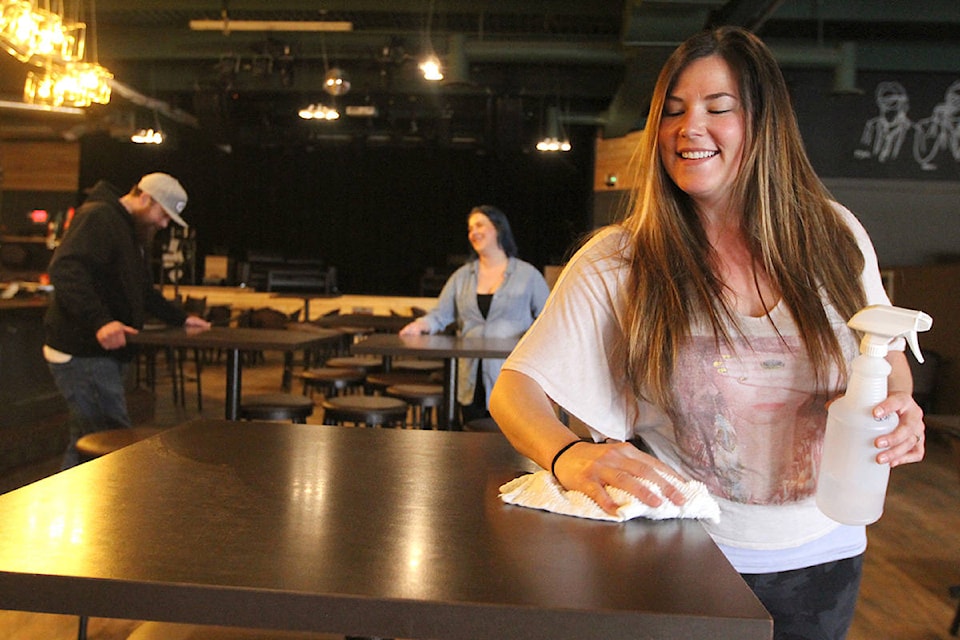Alberta restaurants, including those in Red Deer and central Alberta, could reopen their doors as soon as next week.
The first stage of the provincial government’s economic relaunch strategy would allow cafes, restaurants and pubs to run at half capacity as soon as Thursday.
Brennen Wowk, owner of Bo’s Bar and Stage, says he’s excited to potentially welcome customers back into the establishment.
“Safety is our No. 1 priority, and we’re putting systems in place to ensure that when a customer comes in here, they can trust we’re doing our part to ensure they’re as safe as possible,” he said, adding staff safety is just as important.
Rick More, CEO of the Red Deer & District Chamber of Commerce, says the restaurant sector is one of many industries suffering in Alberta.
“You have to consider how many were being crippled before COVID, with increased layered costs, including salaries and benefits, carbon tax … and the ever-rising cost of goods,” said More.
“Margins in this sector are minimal at the best of times. Their resilience of offering takeout was at best, a break even, and in most cases, operated at a loss.”
More said it will be very difficult to survive by operating at “just 50 per cent occupancy.” And raising menu prices to counter the revenue loss would be “very dangerous,” considering how many customers have less disposable income.
“Many of our restaurant members are family owned and run and don’t have the comfort of absorbing lost revenue,” said More.
Wowk isn’t sure how busy business will initially be.
“We don’t know what exactly our community is looking for yet. We’re a big room and we’re looking to operate slowly and ramp up toward 50 per cent capacity.
“We’re going to be putting a lot of measures in place to ensure that safety. It’s going to be interesting to see where things are at in the world,” he said.
It’s All Greek To Me owner Nick Sakkalis says he hopes to welcome customers back next week too.
“It’s always a good thing to be open for business,” said Sakkalis.
“But it’s hard to tell (how busy restaurants will be) with how it is. People do like to get out. They’ve been sitting around the house for so long.”
Staff is ready to return to the restaurant, he added.
A survey by the industry group Restaurants Canada suggests businesses are worried their outlets won’t have enough liquidity to pay vendors and other expenses over the next three months.
“The resiliency of our industry won’t be enough to ensure Alberta’s 11,200 restaurants remain viable in the face of insufficient cash flow and insurmountable debt,” said Mark von Schellwitz, Restaurants Canada’s vice-president for Western Canada.
“The province needs to come to the table with a package of solutions to help these mostly small and medium-sized businesses stay afloat as they ramp up their operations.”
Before the start of the COVID-19 pandemic, Alberta’s $12-billion foodservice industry represented 3.4 per cent of the province’s GDP and was the province’s third-largest private-sector employer, Restaurants Canada says.
If conditions do not improve, the province’s food service sales could be down by as much as $2.2 billion for the second quarter of 2020, and the industry might not be able to recover the roughly 95,000 jobs it’s lost due to COVID-19, it stated in a release.
sean.mcintosh@reddeeradvocate.com
Like us on Facebook and follow us on Twitter
